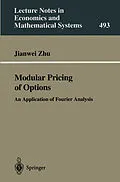From a technical point of view, the celebrated Black and Scholes option pricing formula was originally developed using a separation of variables technique. However, already Merton mentioned in his seminal 1973 pa per, that it could have been developed by using Fourier transforms as well. Indeed, as is well known nowadays, Fourier transforms are a rather convenient solution technique for many models involving the fundamental partial differential equation of financial economics. It took the community nearly another twenty years to recognize that Fourier transform is even more useful, if one applies it to problems in financial economics without seeking an explicit analytical inverse trans form. Heston (1993) probably was the first to demonstrate how to solve a stochastic volatility option pricing model quasi analytically using the characteristic function of the problem, which is nothing else than the Fourier transform of the underlying Arrow /Debreu-prices, and doing the inverse transformation numerically. This opened the door for a whole bunch of new closed form solutions in the transformed Fourier space and still is one of the most active research areas in financial economics.
Inhalt
Introduction.- Purposes of this Book; Constructing Characteristic Functions; Economic Interpretation of CFs; Examination of Existing Option Models; Equivalence of CFs to PDEs; Modular Pricing of Options.- Stochastic Factors as Modules; Stochastic Volatilities; Stochastic Interest Rates; Random Jumps; Integrating the Modules; Appendices; Extensions of MPO to Exotic Options.- Barrier Options; Lookback Options; Asian Options; Correlation Options; Other Exotic Options; Appendices; Conclusions
